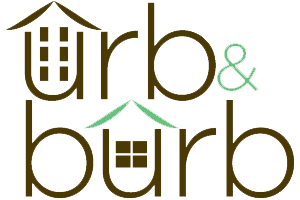So you’re on the homebuying market. Congratulations! You’re probably already overwhelmed by decisions: Vintage or modern? Siding or Brick? Condo or single family? Carpet or hardwood flooring?
And that’s not even including one of the most important factors in any new home purchase: location, location, location.
It might not be everything, but it’s almost everything. It will determine your commute, change your social life, shape your children’s education, and affect a host of other aspects in your life. Depending on your city, you probably have your own dream neighborhoods and avoidable boroughs. But in case you don’t — or if you want a bit more guidance as you do research — we at ABODO have put together a handy checklist of things to look for (and avoid) as you examine possible settings for your new house. Every day, we help thousands of people find the perfect apartment — in the perfect spot — for their needs, so we know what to look for.
School Districts
If you don’t have children and don’t plan on having them, skip to the next item. But if you have a family — or think you might have one within the next few years — school districts should be a major component in your neighborhood choices. Sites like niche k12 offer testing statistics, user reviews, and contact information for hundreds of thousands of schools nationwide — public, private, and charter. In some cases, it might be a good idea to schedule a tour, or attend an open house, so you can get an idea of how your child (or potential child) might fit in with the culture and educational philosophy.
Property Taxes
You’ll be paying taxes on your house and the land it sits on, so it’s a good idea to know the general tax rate in the neighborhood you’re investigating, and what it gets you. If you’re in the market for a particular property, it shouldn’t be hard to find the value of the house and attendant land up for purchase, but if you’re unclear on that topic, you can always contact the county assessor for an up-to date valuation. As for tax rates, the local government typically keeps those figures easily accessible online, but you’ll also want to look at other local entities requiring tax money: public schools, town administration, etc. And depending on your area, tax rates may be affected by a range of services. For example, in some cities tax rates are higher but include services like trash pickup and sewer, while smaller towns treat such services “a la carte’” for a lower property tax rate. It’s good to know not only how much money you’ll be paying, but where it’s going.
Neighborhood Parks
Local parks — state, county, or city — provide health benefits and recreational opportunities beyond your backyard. Sometimes, your lawn just doesn’t have enough space to toss a football around. Or you want to venture out for a picnic, go for a scenic jog, or ride your bike. Plus, studies show that nature sojourns are linked to lower blood pressure, reduced obesity rates, and mitigated pollution effects. If getting outside often is important to you, see what the local parks offer, such as tennis courts, basketball courts, or grills, and how well they’re maintained. Also consider the distance between you and the parks or trails — do you want to load up your bike and drive across town for every ride? If not, try to find a home with easy access to a bike ped trail. Also, do a little research into which local parks often host festivals or concerts throughout the year. Armed with that information, you can decide how close — or far — you want to live to these events.
Crime Rate
Few neighborhood characteristics are as universally desirable as safety. Everyone wants the freedom to go for an evening walk without worry or leave their ground floor windows open overnight. To check up on the crime rate in your potential future neighborhood, you could peruse the local police blogs or go on CrimeReports.com for a map of offenses as well as trends, or FamilyWatchdog.us for a map and details of nearby sex offenders. As little as a few streets can separate a safer neighborhood from a more dangerous one, so be sure to center your research around your potential home’s street address.
Natural Phenomena
We’re not talking about snowstorms or hurricanes here — you already know what region of the country you are in. The big nature flag to watch for in your new neighborhood is whether you’re located in a floodplain. Flooding is huge for homeowners for many reasons: It lowers the property’s value, destroys belongings, and is not typically covered by homeowner’s insurance. Flood protection is a very expensive separate policy that you’ll absolutely want if you need it, but if you never do, it’s a lot of money down the drain. To check your property, visit FEMA’s Flood Map Service Center or FloodSmart.gov to see what your insurance bill might look like.
Eye Test
This neighborhood measure is the easiest to research: just take a look around and see how you feel. Do the yards look maintained? Are there people outside, enjoying the area and engaging in the community? Are the streets clean? How are the noise and traffic levels? Also stop by the neighborhood at night to see if anything changes. It’s a simple test, but it shouldn’t be underestimated

